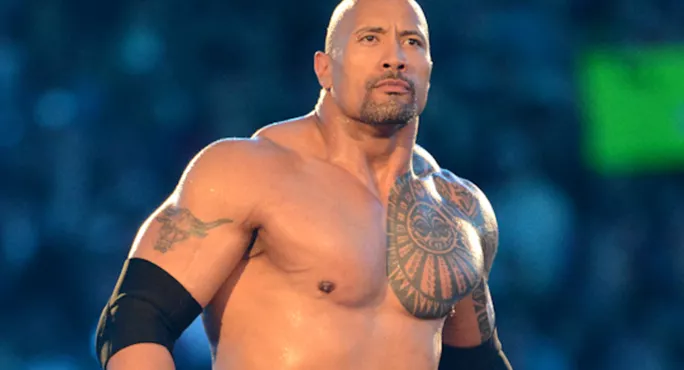- Home
- ‘The pro wrestling tricks I use in the classroom’
‘The pro wrestling tricks I use in the classroom’

When I was young and couldn’t sleep at night, it wasn’t because I was absorbed with dreams of pedagogy and setting homework. No - it was piledrivers, sharpshooters and hulking up that kept me awake past my bedtime. Becoming a teacher honestly never crossed my mind. My destiny was set: I was going to be a wrestler.
It’s easy to dismiss professional wrestling as a freak show, a carnival act of make-believe. But, spend a bit of time in front of it - or in my case, a whole childhood - and you’ll quickly start to appreciate the narrative arcs, the character development, the classic dichotomy of goodie versus baddie. A world of catchphrases and tan and muscles, where everybody is everybody else’s “brother”. It’s pure pantomime, a soap opera come to life.
In the end, I didn’t become a wrestler. But my day does start and end when the bell rings, and I’ve had plenty of lessons punctuated with heavy bumps and beautiful high spots. Maybe this career isn’t so different after all?
Repetition is king
The wrestling universe thrives on repetition - the recognisable beats of a match, the sing-song crowd reactions, each wrestler’s idiosyncratic moves and catchphrases. (So many catchphrases.) With three punches, a big boot to the face, and the dreaded leg drop, Hulk Hogan ended his matches with the same masterful impact of a well-delivered lesson plenary.
This appreciation for coherence and familiarity is similarly valued in teaching, with our classroom rules, assemblies, and lesson structures creating a predicable pulse throughout the week. And who hasn’t worked with a colleague who rehashes their favoured phrases on a loop? These consistent behaviours are reassuring landmarks in many of our pupils’ days: these patterns give wrestling events, as well as school lessons, a comforting predictability for both audience members and pupils.
In the ring: ‘Teaching is the best preparation for wrestling’
Grapple of my eye: ‘Wrestling made me a better teacher’
‘Teachers are like actors’: Body language crucial if teachers want engaged pupils
Cutting a promo
Any time you see a wrestler snarling their catchphrases into a microphone, they are “cutting a promo”. In the entertainment industry, they are literally trying to sell tickets to an event; in teaching, we use identical rhetorical skills to promote our ideas, behaviours, and expectations.
Some of the best promo guys in wrestling use sophisticated and complex techniques to enchant the audience, with The Rock being a prime example. Watch how he works a crowd using metaphor, dramatic pauses, gesture and expression; commanding adoring chants and awed silence with the twitch of an eyebrow. He’d deliver the most hellacious end-of-term assembly you’ve ever seen. And the best school leaders do much the same, inspiring degrees of respect, admiration and sometimes even fear among the cohort.
Tables, ladders and chairs, oh my!
Gimmicks and props have a long history in pro wrestling. When I was young there was “Hacksaw” Jim Duggan with his plank of wood, and Jake “The Snake” Roberts with his, well, his snake. As wrestling grew more violent in the 1990s, they started using steel chairs and barbed wire to scrawl their points across one another’s foreheads. And, I must admit to loving a good classroom gimmick myself. A clay skull to bring Hamlet’s meeting with Yorick to life, a chalkboard where I record my “list of enemies” (pinched from Chris Jericho). Props like these bring dynamism and fresh energy to lessons, as they evolve and disappear and make comebacks, just like (yes) the best wrestlers have always kept themselves fresh.
It’s a work, brother
Critics will say that wrestling is fake, but it could more accurately be described as a “work”. The characters are working with each other to deliver drama. It’s a dance, a theatrical performance. Occasionally wrestlers will let their professional demeanour slip, and start “shooting” on each other, throwing real punches and going off-script.
In my mind, teaching should always be a work. When something happens that warrants our anger, it should be manufactured anger. It’s dangerous territory whenever a teacher works themselves into a shoot. Emotions and ego are best left in the car park. Through all the variables of a school day, whether it’s setting assessments or supervising the playground or communicating with parents, it’s always a work, brother.
Getting over with the crowd
Think about the best teachers you’ve been taught by, or worked alongside, and there’s a fair argument that they share qualities with history’s great wrestling characters. Whether it’s the mad-eyed intensity of The Ultimate Warrior, the willpower of Bret Hart or the fearsomeness of The Undertaker, what we are really captivated by is presence, charisma. The ability to engage an audience and tell a story, whether that revolves around poetry or biology or history.
In wrestling, they call it “getting over”. In teaching, you might call it “establishing yourself”. In either line of work, if you turn up on time, put in the work year after year, and treat people well, it’ll go a long way to having an impact - and inspiring young minds.
Alan Gillespie is principal teacher of English at Fernhill School in Glasgow
Keep reading for just £1 per month
You've reached your limit of free articles this month. Subscribe for £1 per month for three months and get:
- Unlimited access to all Tes magazine content
- Exclusive subscriber-only stories
- Award-winning email newsletters



